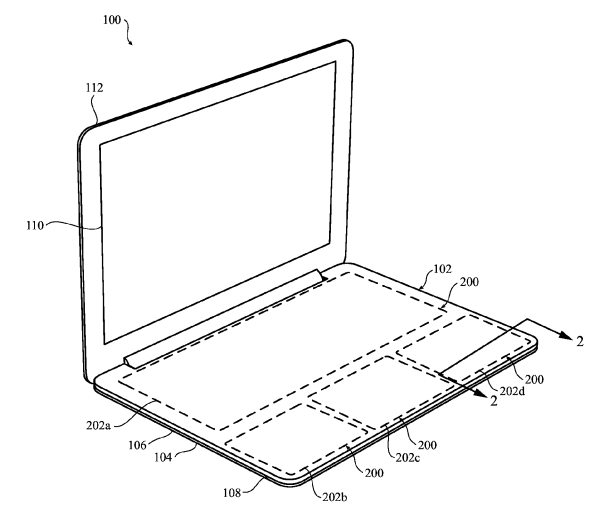Apple Please Don’t Ruin The MacBook Pro – The ‘Book Mystique
Alas I fear my rhetorical entreaty may be too late — even if Apple was disposed to heed my advice, which of course they’re not.
However if a growing body of rumors suggesting that the next generation flagship MacBook Pro line will be radically slimmed down from its already adequately svelte form factor, thus requiring incorporation of the so-called “butterfly” keyswitch design keyboard used in the Retina 12-inch MacBook, count me out as a prospective MacBook Pro customer. .
Currently in the early stages of the hunt for a system upgrade from my mid-2013 MacBook Air, I could hold my nose and learn to live with a rumored OLED function bar in lieu of analog function keys (although I would much prefer a good regular keyboard and real touchscreen with a touch-enabled Mac OS X). Apple going all USB-C with the new MacBook Pro would be survivable so long as there are really four USB-C ports as is being predicted. USB-C is the future standard, and adapters are available to support legacy USB connectivity — as tedious, inelegant and nickel-diming costly as that is.
However, a comfortable, efficient keyboard is one of the, well, key advantages of using a laptop instead of a tablet. Microsoft has always understood the importance of good keyboard and mouse design much better than Apple, or alternatively Apple has just habitually chosen to ignore and/or disregard best ergonomic engineering practices in favor of aesthetics, particularly in service of its increasing obsession with extreme form factor thinness — an altar upon which many other important practical Apple device engineering aspects and attributes have been sacrificed.
As one who types a lot and suffers from both peripheral neuritis and constant threat of lurking repetitive stress injury (RSI), I’m obliged to be extremely picky about keyboard keystroke action. Distinctions among various ‘boards in this context can be dramatic. I can go for extended typing sessions on an ergonomically well-engineered keyboard, while one with poor key action can leave me in pain and numbness and from fingertips to shoulders in under 10 minutes of use.
Apple’s current scissors-action keyboards used in MacBook Airs and MacBook Pros rank somewhere in the middle — far from ideal but I can use them for editing and composition as long as I don’t overdo it.
As for that “butterfly” keyswitch ‘board in the 12-inch MacBook, while I haven’t had the opportunity to give it a good workout personally, my inference is not optimistic, based on reviewer upon reviewer commenting to the effect that “after about an hour [typing on the skinny MacBook keyboard], my hands began to feel sore.” Not an auspicious consensus for me and many others who struggle with typing pain.
Now, ergonomically compromised keyboard action may be sort of tolerable as one of the trade-offs associated with making a laptop with the footprint and weight of a tablet, but it’s arguable that few would choose such a machine for a regular long form typing platform. However, a MacBook Pro, at least if its claim to being a “professional” device is to be meaningful, is an entirely different matter, and if Apple perseveres with grafting the butterfly ‘board into the new Pro ‘book, that will as noted put paid to me ever buying one, and have me considering switching to Windows more seriously than at any time previously in my 25 years on the Mac. For me, bad keyboard action is a non-negotiable deal-breaker.
I don’t have any particular Windows laptop in mind, but there is a wide selection — most considerably less expensive than Apple hardware — and the convertible laptop/tablet concept intrigues me. A Mac workaround would be to opt for a certified refurbished current generation MacBook Pro as an interim measure until it is clear as to whether the butterfly action keyboard is to become the Apple standard across the board, which appears likely if rumors are accurate.
There is some faint hope in Apple being granted a patent back in April for a “configurable, force-sensitive input structure for an electronic device,” — in plainer English a capacitive keyboard that could be used in laptop computers instead of a physical keyswitch type keyboard. Essentially, it would bring tablet-style virtual keyboard input to clamshell laptops, with the addition of haptic “motion” feedback even though the user would be touching zero-travel “keys” on a flat plane. I get along reasonably well with the virtual on-screen keyboard in my iPad, and haptic feedback would make it even better, and provide me with a reprieve if Apple eventually equips a laptop with it. Perhaps the rumored OLED function bar in the new MacBook Pro is a trial balloon of sorts.
Other advantages of such a setup would include enabling iOS style contextual keyboard layouts that could change to provide optimization with the application in use, a drastic reduction in moving parts and elimination of the mechanical wear factor and increased resistance to dirt and/or moisture ingress.
However, while in general design gimmicks like extreme thinness requiring use of a compromised keyboard are arguably excusable in boutique devices aimed at well-heeled executives and other management professionals who are likely to delegate medium to long form typing jobs to assistant staff, they are emphatically not OK in a machine purporting to be a serious professional grade production tool when they come at the expense of practical functionality.

